Kia Niro vs MINI Aceman – Differences & prices compared
Compare performance, boot space, consumption and price in one view.
Find out now: which car is the better choice for you – Kia Niro or MINI Aceman?
The Kia Niro (SUV) comes with a Full Hybrid or Plugin Hybrid engine and Automatic transmission. In comparison, the MINI Aceman (SUV) features a Electric engine with Automatic transmission.
When it comes to boot capacity, the Kia Niro offers 451 L, while the MINI Aceman provides 300 L – depending on how much space you need. If you’re looking for more power, decide whether the 180 HP of the Kia Niro or the 258 HP of the MINI Aceman suits your needs better.
In terms of consumption, the values are 2.40 L per 100 km for the Kia Niro, and 14 kWh for the MINI Aceman.
Price-wise, the Kia Niro starts at 29100 £, while the MINI Aceman is available from 25500 £. Compare all the details and find out which model fits your lifestyle best!
Kia Niro
The Kia Niro presents itself as a versatile and eco-friendly SUV, blending a stylish design with advanced hybrid technology. Its spacious interior offers comfort and practicality, making it ideal for both city driving and longer journeys. With a focus on efficiency and sustainability, the Niro is a compelling choice for environmentally conscious drivers.
details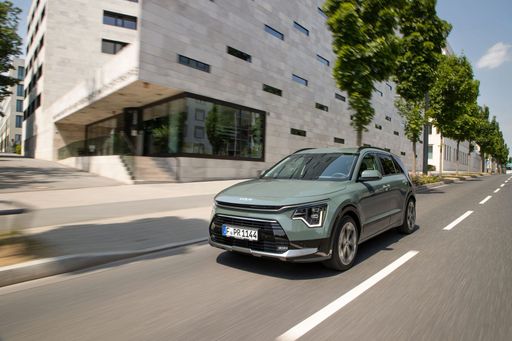 @ press.kia.com
@ press.kia.com
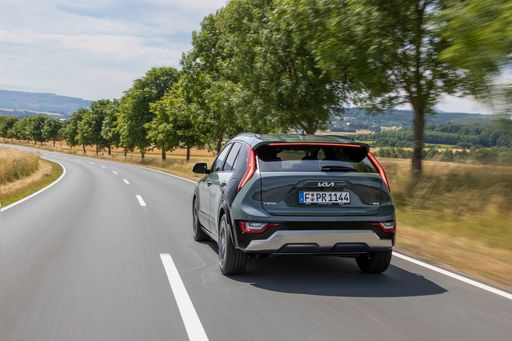 @ press.kia.com
@ press.kia.com
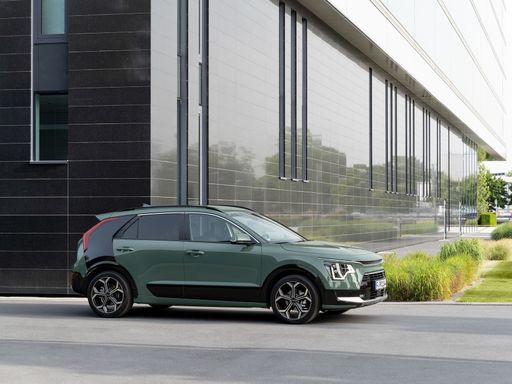 @ press.kia.com
@ press.kia.com
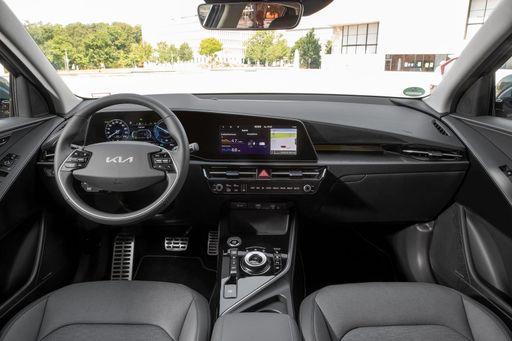 @ press.kia.com
@ press.kia.com
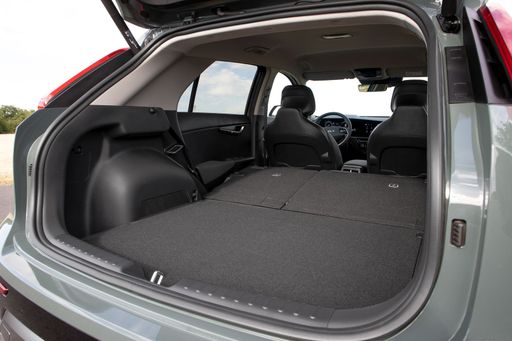 @ press.kia.com
@ press.kia.com
MINI Aceman
The MINI Aceman offers a fresh take on urban mobility, blending iconic design elements with modern technology. Its compact form is paired with an interior that exudes both comfort and style, making it a popular choice for city drivers. With an emphasis on sustainability, the Aceman features eco-friendly materials and innovative features that enhance the driving experience.
details @ press.bmwgroup.com
@ press.bmwgroup.com
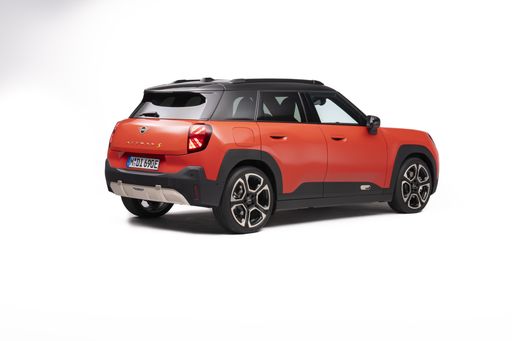 @ press.bmwgroup.com
@ press.bmwgroup.com
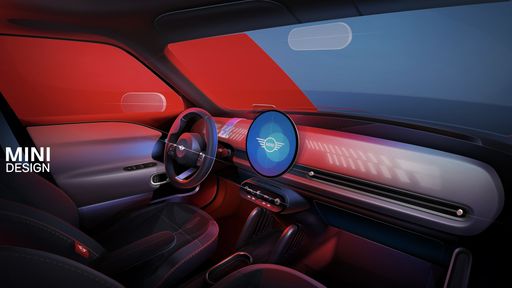 @ press.bmwgroup.com
@ press.bmwgroup.com

|

|
|
|
|
Costs and Consumption |
|
|---|---|
|
Price
29100 - 38600 £
|
Price
25500 - 36200 £
|
|
Consumption L/100km
2.4 - 4.9 L
|
Consumption L/100km
-
|
|
Consumption kWh/100km
-
|
Consumption kWh/100km
14 - 16 kWh
|
|
Electric Range
57 - 62 km
|
Electric Range
303 - 405 km
|
|
Battery Capacity
1.3 - 11.1 kWh
|
Battery Capacity
38.5 - 49.2 kWh
|
|
co2
53 - 111 g/km
|
co2
0 g/km
|
|
Fuel tank capacity
37 - 42 L
|
Fuel tank capacity
-
|
Dimensions and Body |
|
|---|---|
|
Body Type
SUV
|
Body Type
SUV
|
|
Seats
5
|
Seats
5
|
|
Doors
5
|
Doors
5
|
|
Curb weight
1474 - 1594 kg
|
Curb weight
1720 - 1825 kg
|
|
Trunk capacity
348 - 451 L
|
Trunk capacity
300 L
|
|
Length
4420 mm
|
Length
4079 mm
|
|
Width
1825 mm
|
Width
1754 mm
|
|
Height
1545 mm
|
Height
1514 mm
|
|
Payload
466 kg
|
Payload
450 - 530 kg
|
Engine and Performance |
|
|---|---|
|
Engine Type
Full Hybrid, Plugin Hybrid
|
Engine Type
Electric
|
|
Transmission
Automatic
|
Transmission
Automatic
|
|
Transmission Detail
Dual-Clutch Automatic
|
Transmission Detail
-
|
|
Drive Type
Front-Wheel Drive
|
Drive Type
Front-Wheel Drive
|
|
Power HP
138 - 180 HP
|
Power HP
184 - 258 HP
|
|
Acceleration 0-100km/h
9.9 - 11.4 s
|
Acceleration 0-100km/h
6.4 - 7.9 s
|
|
Max Speed
170 - 185 km/h
|
Max Speed
160 - 200 km/h
|
|
Torque
265 Nm
|
Torque
290 - 350 Nm
|
|
Number of Cylinders
4
|
Number of Cylinders
-
|
|
Power kW
102 - 132 kW
|
Power kW
135 - 190 kW
|
|
Engine capacity
1580 cm3
|
Engine capacity
-
|
General |
|
|---|---|
|
Model Year
2025
|
Model Year
2024 - 2025
|
|
CO2 Efficiency Class
C, B
|
CO2 Efficiency Class
A
|
|
Brand
Kia
|
Brand
MINI
|
Kia Niro
The Evolution of the Kia Niro: A Glimpse into the Future
The Kia Niro has become a symbol of innovation in the hybrid and electric vehicle market. This compact SUV offers a unique blend of efficiency, performance, and style, appealing to a wide range of drivers. Kia Niro's latest model lineup showcases different powertrains, offering consumers choices between full hybrid, plug-in hybrid, and full electric options. These advancements represent Kia's commitment to sustainable mobility and cutting-edge technology.
Performance and Efficiency: Behind the Wheel of the Kia Niro
The performance range of the Kia Niro is impressive, with power outputs ranging from 129 PS in the full hybrid variant to 204 PS in the completely electric version. This ensures that there’s a Niro to meet diverse driving needs and preferences. The acceleration from 0-100 km/h spans between 7.8 to 11.3 seconds across different models, showcasing a balance between efficiency and responsiveness.
Fuel and energy consumption figures are equally commendable. With the hybrid models consuming between 0.8 to 4.4 litres per 100 km and the electric model utilising 16.2 kWh per 100 km, the Kia Niro caters to eco-conscious consumers. Notably, the plug-in hybrid version offers a remarkable electric range of up to 65 km, while the fully electric model boasts an impressive range of 460 km on a single charge.
Innovative Features for Today’s Driver
Kia has equipped the Niro with state-of-the-art features aimed at enhancing the driving experience. The latest models come with advanced driver assistance systems, ensuring safety and convenience. These include lane-keeping assist, adaptive cruise control, and collision avoidance technologies that set a high standard in the compact SUV class.
The Niro also benefits from a sleek infotainment system featuring a high-resolution display, offering seamless connectivity with features like Apple CarPlay and Android Auto. This keeps drivers connected while minimising distractions, creating an optimal driving environment.
Design and Practicality: A Perfect Balance
The Kia Niro stands out with its aerodynamic design, which is both aesthetically pleasing and practical. The dimensions of the vehicle – 4420 mm in length, 1825 mm in width, and a height ranging from 1545 to 1570 mm – provide ample space for passengers and cargo. The boot capacity ranges from 348 to 475 litres, catering to those who require versatility for their lifestyle or family needs.
The Niro’s cabin is crafted with a focus on comfort and usability, incorporating high-quality materials and an intelligent layout that complements its sophisticated exterior.
Sustainability and Cost Efficiency
The Kia Niro reflects Kia's dedication to improving environmental performance. The CO2 emissions spectrum, ranging from 0 to 100 g/km depending on the powertrain, highlights the vehicle's eco-friendly credentials. For those particularly conscious of their environmental footprint, the electric and plug-in hybrid models offer substantial reductions in emissions.
In terms of cost, the Niro offers competitive pricing from €32,790 to €47,590, and operational costs ranging from €928 to €1,101 per month. The Niro also maintains a reasonable cost per kilometre, between 37.1 to 44.1 cents, making it an economically sound choice in the long run.
Conclusion: The Future is Bright for Kia Niro
The Kia Niro stands as a testament to Kia’s innovative spirit and commitment to providing eco-friendly and technologically advanced vehicles. Its blend of performance, efficiency, and innovative features make it a compelling option for those seeking a future-focused SUV. As Kia continues to evolve, the Niro remains a leading example of how the brand is shaping the future of driving.
MINI Aceman
The MINI Aceman: A New Era of Innovation
The arrival of the MINI Aceman marks a pivotal moment in the evolution of MINI’s automotive design and sustainability commitment. This fully electric SUV is a testament to cutting-edge engineering and forward-thinking design, setting a new benchmark in its class.
Technical Prowess Under the Bonnet
At the heart of the MINI Aceman lies a powerful choice of electric motors. With options offering between 184 and 218 PS, drivers can expect responsive and dynamic performance courtesy of the efficient front-wheel drive setup. The unique selling point is its ability to deliver substantial boost with instant torque ranging from 290 to 330 Nm. Such power ensures that the Aceman can accelerate from 0-100 km/h in as little as 7.1 seconds, while maintaining a sustainable driving efficiency.
Range and Efficiency
The MINI Aceman's battery capacity ranges from 38.5 to 49.2 kWh, providing an impressive electric range of up to 405 km. This efficient design is encapsulated in its consumption, between 14 and 14.1 kWh/100km, allowing drivers to cover distances with minimal environmental impact. It is a model of sustainability with a CO2 efficiency class of A, emitting zero grams of CO2 per kilometer.
Design and Innovation
Continuing MINI's tradition of expressive design, the Aceman features a bold new look whilst retaining iconic MINI stylings. The vehicle measures 4079 mm in length, 1754 mm in width, and 1514 mm in height, offering a compact and urban-friendly posture. Practicality has not been compromised, offering a boot space of 300 liters and a versatile five-seat configuration. This makes the Aceman a practical choice for city and long-distance adventures alike.
Comfort and Technology
The interior of MINI Aceman is packed with technological innovations and high-quality materials, spanning several trim levels including Essential Trim, Classic Trim, Favoured Trim, and the sporty JCW Trim. These trims allow for customization to match individual preferences and lifestyles. The driver-centric cockpit is designed for intuitive interaction, with features that seamlessly integrate with the digital aspirations of modern drivers.
Price and Positioning
Starting at €34,900 and reaching up to €47,860, the MINI Aceman represents an attractive proposition in the burgeoning electric SUV market. It competes by offering a full spectrum of luxury, performance, and efficiency, exceeding expectations of what an electric SUV can achieve.
Conclusion
The MINI Aceman is not just an electric vehicle; it's a statement of modern engineering and design excellence. For those ready to embrace the future of driving without sacrificing the thrill and quality of the journey, the MINI Aceman stands out as a top contender.
Which drive types are available for the Kia Niro?
Available as Front-Wheel Drive.
The prices and data displayed are estimates based on German list prices and may vary by country. This information is not legally binding.
